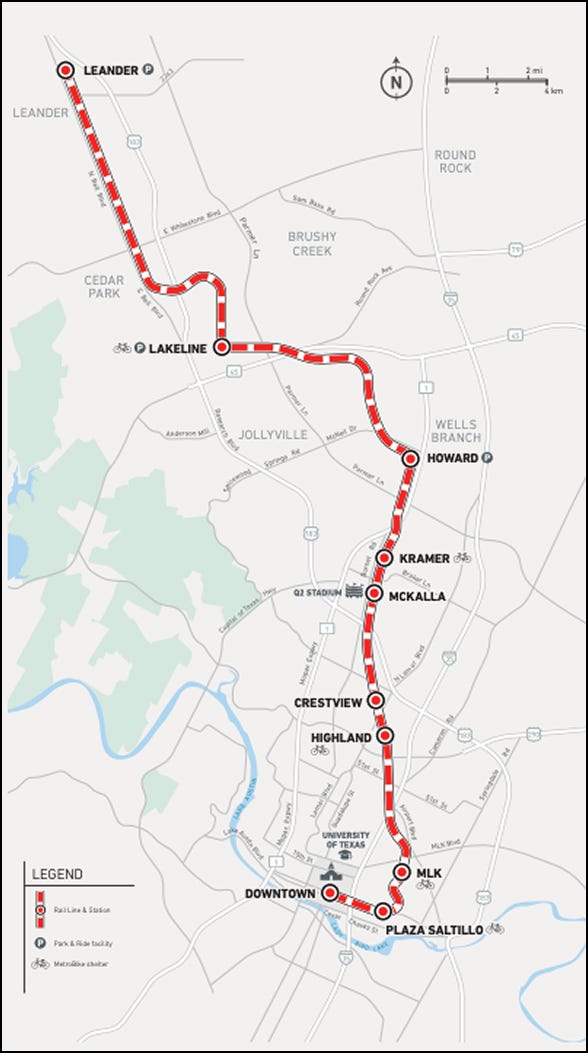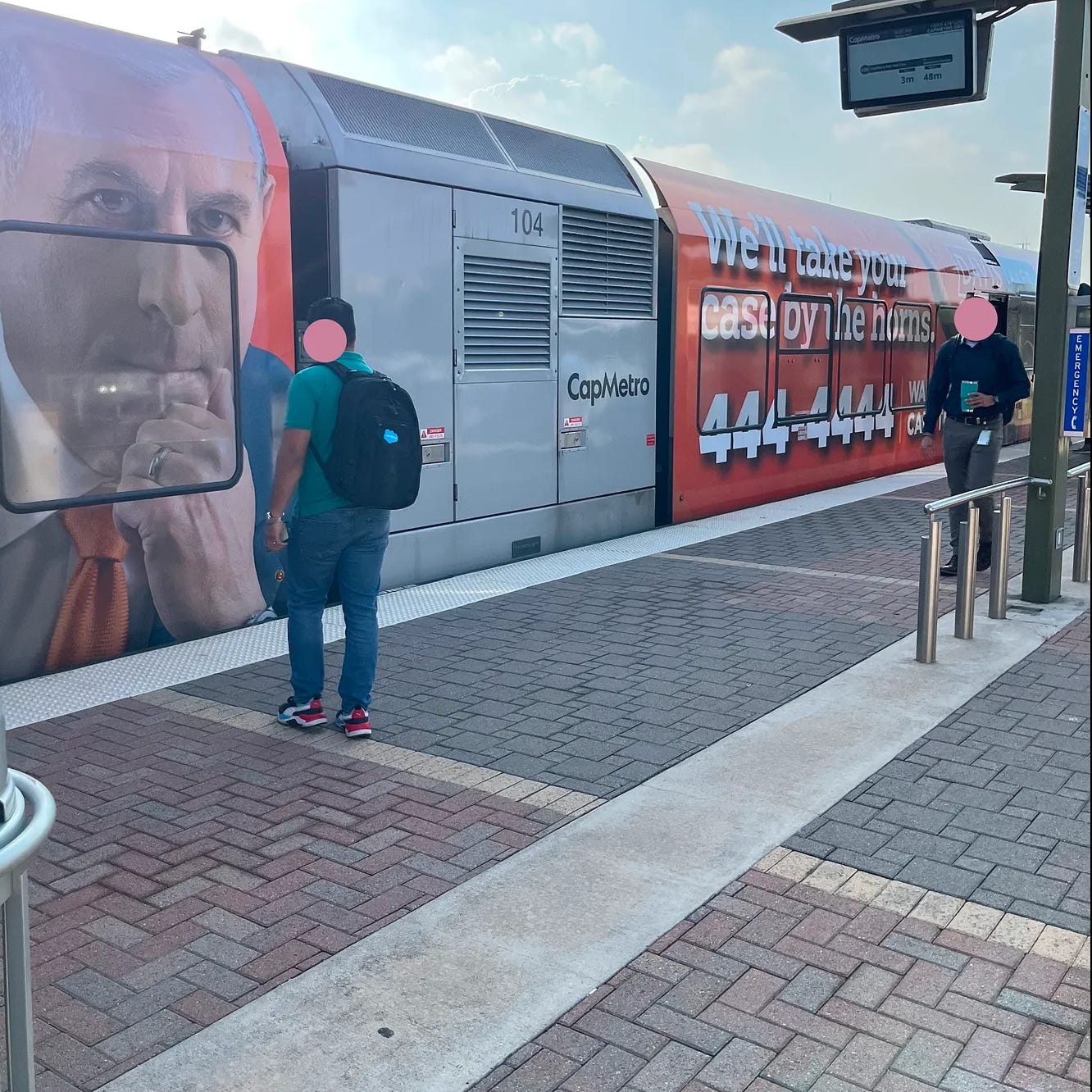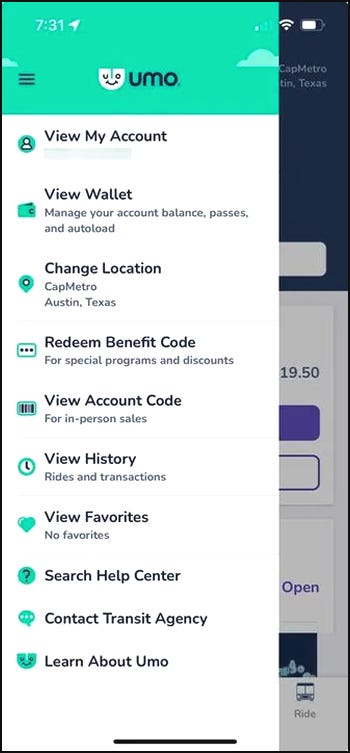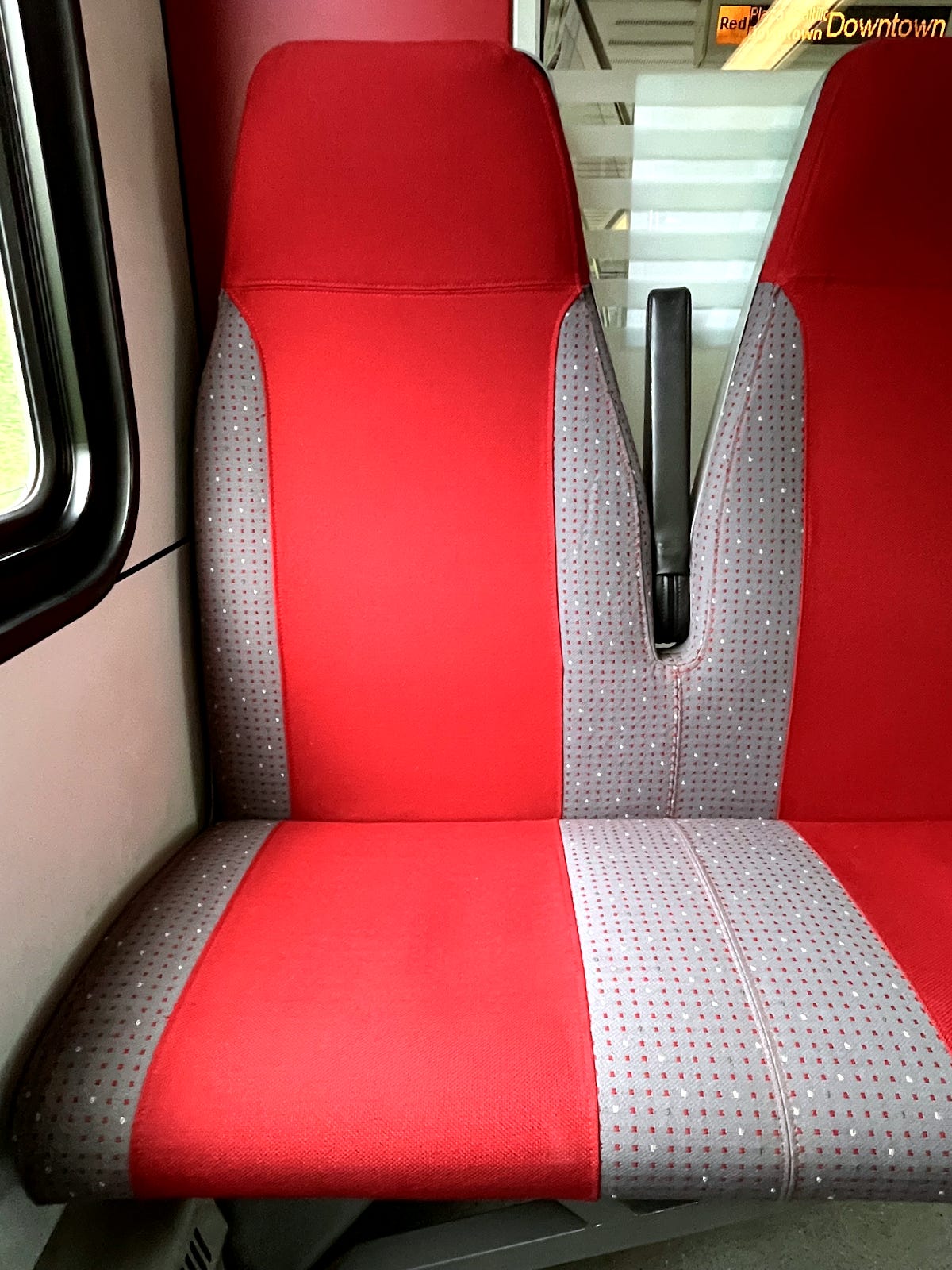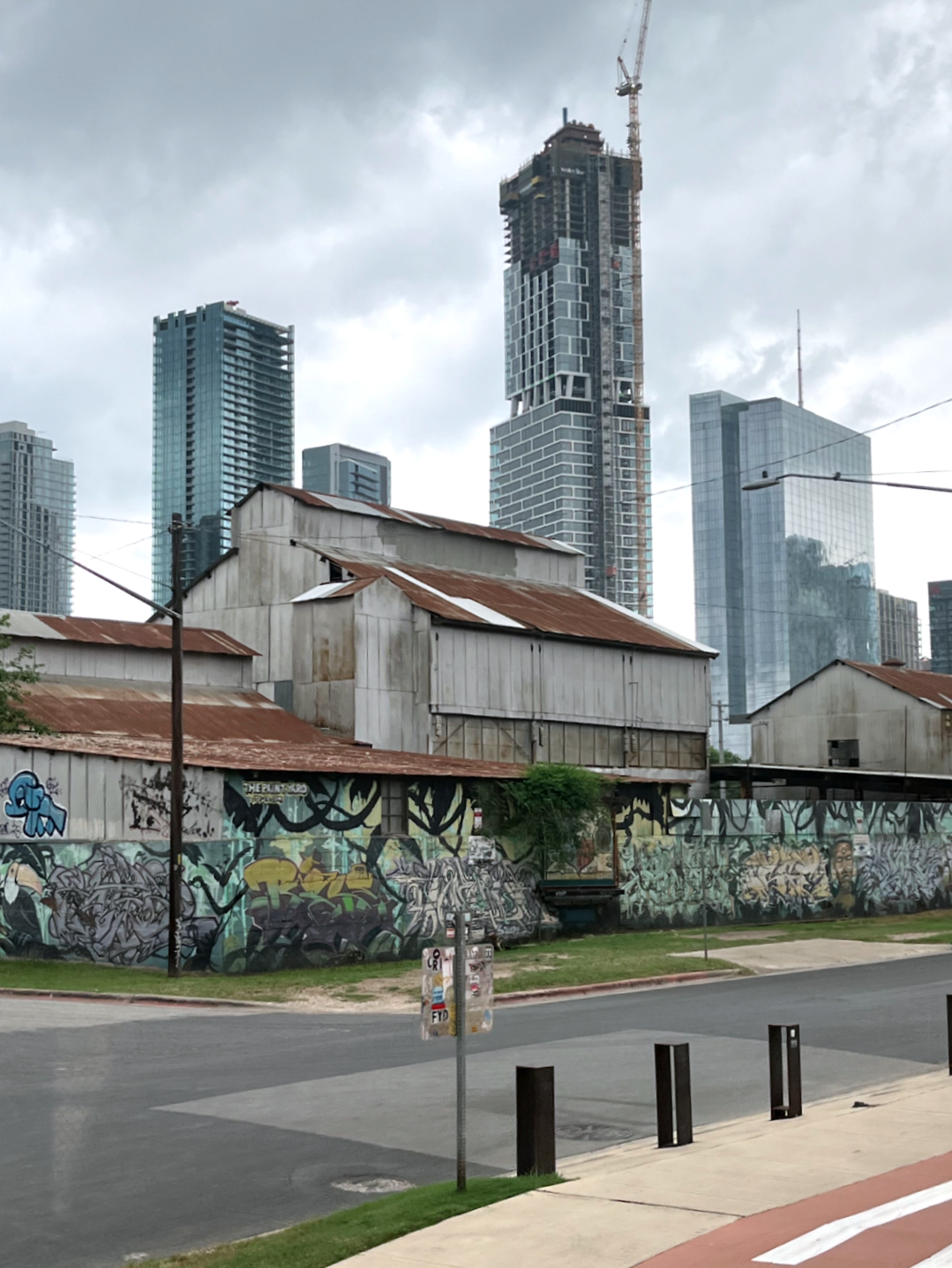[In Transit] Austin's CapMetro Red Line
Like a Michelin Review, But for Trains
🚆 What & Where: Commuter rail from Leander to Downtown Austin
🌆 Best for: Workday commutes, Austin FC fans
😬 Worst for: Off-hour trips, people who don’t carry waiting-for-the-train booksRecently, urbanist policy books have inspired a wave of online reviews (I even wrote one myself). But that got me thinking; you know what don't get regular reviews? Trains. So, in pursuit of increasing the amount of transit discourse available to my terminally online urbanist nerds, we’ll remedy that here today.
I’ve been hanging out in Austin as of late and, as an urbanist in good standing, I made it a point to use the local commuter rail. Now, instead of rattling off factoids like ridership figures or farebox recovery ratios, I thought I’d make this more experiential. So, without further ado, allow me to introduce…
The CapMetro Red Line
The CapMetro Red Line was built back in 2010 and runs between Downtown Austin and the City of Leander. The line serves as commuter rail, linking Austin’s urban core with the outlying suburbs to the Northwest.
🚗 Getting to the Station
The Leander end of the line is unrepentantly suburban in the most car-centric way possible. This shows up in the layout of the Leander stop (and adjacent stations) in that they’re surrounded by oceans of parking. The fundamental assumption for the Northernmost stations is that riders will drive there. Given the surrounding sprawl, it’s a fair assumption (see: stroad). All in all, the station I used — Lakeline — reminded me of an outlying Bay Area Rapid Transit station with Hill Country characteristics.
💵 Paying to Ride
Admittedly, it took me the better part of ten minutes to figure out how to buy a ticket. There are a couple different ways, but I eventually downloaded Umo and added money to the app’s wallet. Umo is a third-party service that provides transit systems a way to accept payments on mobile which is fine in theory. I have many notes on their design, but I appreciate there was a mobile option at all.1
At $3.50 to ride from one end of the line to the other, The Red Line wasn’t the most expensive train I’d ever taken. While it was more expensive than New York’s MTA, it was definitely cheaper than most trips on BART or Caltrain in the Bay Area.
🚆The Ride Itself
Waiting to board, I was surprised at how busy the platform was. This was mid-morning on a Saturday, so I figured things would be pretty dead without people commuting into work.
My mistake? Austin loves soccer.
Austin FC had a game that day and Q2 stadium is at the McKalla Station. So, the first four stations were standing room only in a sea of green-clad families. Now, my basis for comparison is taking Bay Area Rapid Transit (BART) in the now mythological epoch prior to the pandemic. Against that yardstick, I’d say the Red Line passed with flying colors.
The doors never broke, there was no human waste on the floor, and the air conditioning existed. On second thought, my standards might just be low, but it was a truly pleasant ride. For my Bay Area folks, although I just made the BART comparison, I was really getting notes of Caltrain. Maybe it was just the color scheme or something about the rolling stock, but it really did strike me as Caltrain in miniature.
Anyway, we got to the stadium, 90% of the other passengers got off for the game, and I grabbed a perfectly comfortable seat. The first thing I noticed was the seats were upholstered in cloth which seemed risky, but, again, perhaps I’m just overly prepared for people to be excessively gross.
As we got to the last couple stops before Downtown, I noticed things had started to densify. Dull grey rivers of asphalt gradually gave way to bike infrastructure and charmingly walkable mixed-use density. The development pattern started to feel truly urban, like you could imagine riders getting to the station some way besides having to drive for half an hour first. In fact, the final stop in Downtown drops you off mid-block, next to a dedicated bike path complete with bike share rack.
Does the entire downtown area have great service from this one stop? No. Could the train be a bit faster? Yes.2 But you know what, for a sunbelt city, it’s not bad.
📈 A Train for Austin’s Tomorrow
It was toward the end of the line that I got my favorite picture for the day: a shot of an aging, graffiti’d warehouse with an under construction high-rise peering up from the background. In a lot of ways, I kinda feel that the shot is emblematic of the moment in Austin. It’s a city that’s accepting change, embracing growth, and, consequently, offering countless would-be Austinites a shot at a better life.
When I think about the Red Line’s place in all this, I can see the part it stands to play in that future. Austin’s only going to keep growing, and, painful though it will be, the car-centric development pattern prevalent in much of the area will have to eventually be reformed. Much of that will be painful, time-consuming, and costly; but the fact that the Red Line already exists today will be a boon when the day finally comes that car-choked roads don’t work for anyone at all and the entire region is forced to more fully embrace urbanism from one end of the region to the other.
That’s it for today. Let me know in the comments if y’all enjoy these types of meandering photo essays. I’m also happy to dive into the Red Line’s technical specs or financial model if that's the kind of nerd content you're here for.
The one thing that gave me pause was this reddit thread that pointed out that Umo is owned by a company called Cubic which does transportation tech … and defense contracting? The claims about corporate ownership check out; the reddit poster goes on to speculate that the transportation arm is a really a data play for the defense contracting side of the business (i.e. if you use the app, they’re tracking you; so if you take transit to a protest, maybe Cubic uses that data to narc on you to The State™).
Now, this is pure speculation (i.e. I’m not making the above claim, someone on Reddit is). But…based on my industry experience, I wouldn’t be surprised if the transit business was really a data play of some kind.
During the weekday morning commute, taking the train from Leander to Downtown is about a 1hr ride; that’s versus 1hr driving (+/- 20 minutes depending on traffic) and having to park.


